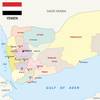Container Business Faces Test of Resolve
London - Drewry’s latest quarterly Container Forecaster report highlights that, while carriers have successfully implemented a series of GRIs recently which will improve their battered financial position, there are still a number of threats which could derail this and that healthy industry profitability is by no means guaranteed.
The perception might be that the industry has turned a corner and the extremely low freight rates seen on the Asia-North Europe trade at the end of last year are now behind us. We concur with this general view to an extent, and we forecast that east-west freight rates, including fuel, will rise by as much 13.7 percent this year. But we should not be lulled into a false sense of security by the considerably higher spot rates revealed in the weekly rate indices and think that all is now fixed.
From an industry perspective, it is clear that higher rates enabling ocean carriers to cover their rising costs and turn a profit is a far healthier position. But there are still a number of factors which threaten this. Demand is by no means certain, and we have downgraded our 2012 global forecast to 4.6 percent, largely on the basis of a weak Eurozone, crippled by debt.
Ocean carriers have successfully implemented GRIs on both the head haul Asia to Europe and Asia to U.S. trades this March, which have lifted spot rates above or at least close to the respective trade route break even margins. But until very recently, even the largest 15,500 teu vessels operating on the Asia-North Europe trade were not making money.
The revised assessment within the Container Forecaster is that the industry lost at least $6.5 billion in 2011, in a year which saw global demand growth of 7.4 percent. This was very much a missed opportunity for carriers to build on their surprisingly strong recovery in 2010. This year will mean they will take some time to make up for this lost ground, rather than moving forward, and we still expect 1Q12 carrier financial results to be weak, although their position will improve as the year progresses.
Recent losses and the high fuel prices have forced the industry into a restructuring, which was started at the end of last year. Many carriers have now grouped together on the core Asia-Europe trade to pool their largest ships into fewer services and to share costs. This was unlikely to have happened several years ago.
Nobody saw the huge $800 per teu rate increases coming on the Asia-Europe trade, and the timing of this bemused virtually everyone. Few believed it would be successful. But carriers have stood firm during a period when load factors have not necessarily been in the high 90’s on the head haul leg. It seems that their recovery into profit is very much dependent on this resolve to maintain the GRIs and little else since they resolutely refuse to put significant tonnage into lay-up. This year will see another 59 ships of at least 10,000 teu enter the global fleet.
“Until the inherent structural capacity is truly tackled, we will continue to have periodic and violent bouts of overcapacity, which will keep rates and operating margins yo-yoing up and down,” said Neil Dekker, head of Drewry’s container research.
“It seems evident that carriers do not truly see the severity of their situation, since the number of ships in actual full term lay-up is fairly small. As of early March, the idle or inactive fleet had grown to around 5.4 percent of total global capacity. But only 47 vessels above 5,000 teu were included in this figure and a number of these are being re-deployed on new services.”












